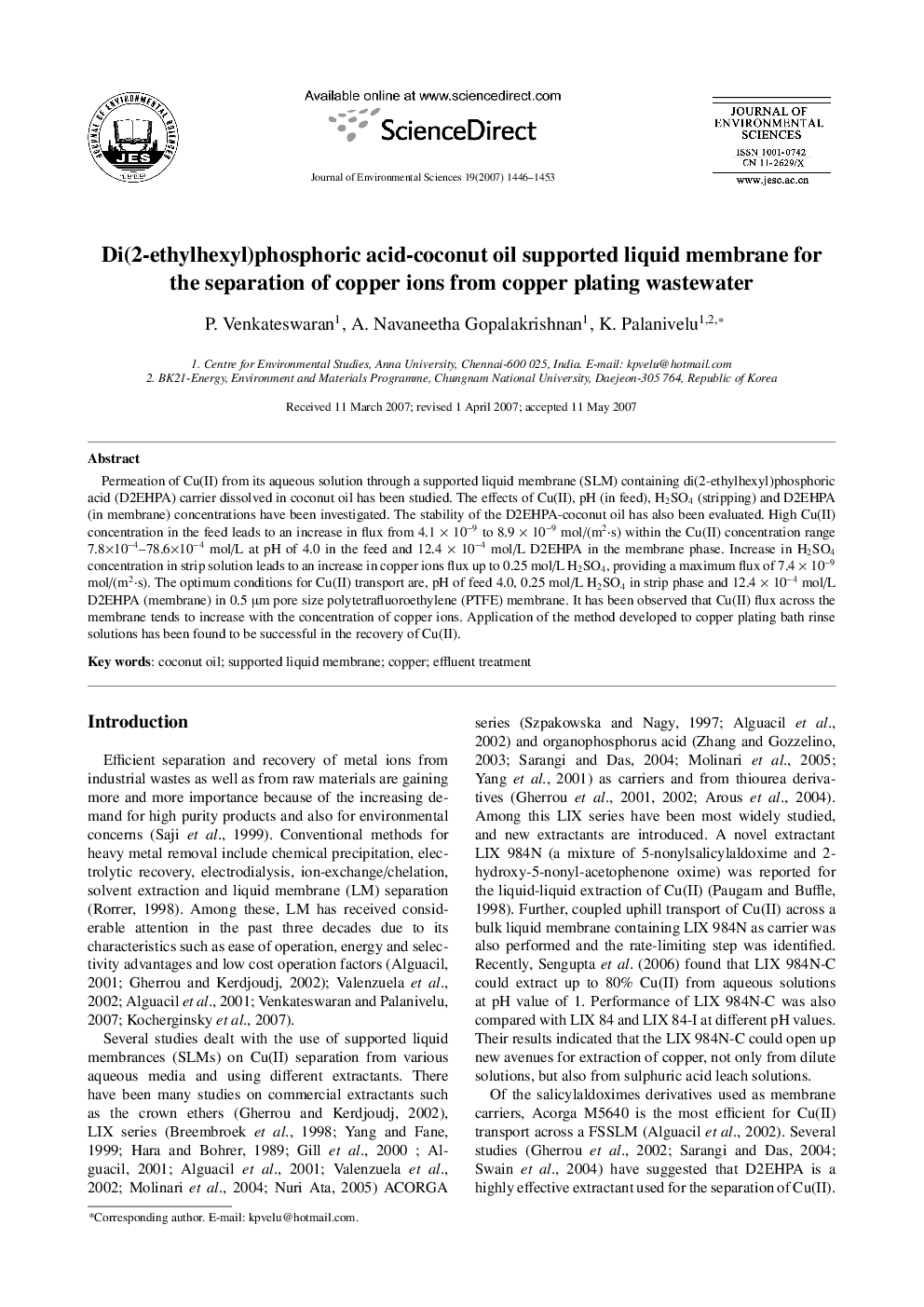| Article ID | Journal | Published Year | Pages | File Type |
|---|---|---|---|---|
| 4456593 | Journal of Environmental Sciences | 2007 | 8 Pages |
Permeation of Cu(II) from its aqueous solution through a supported liquid membrane (SLM) containing di(2-ethylhexyl)phosphoric acid (D2EHPA) carrier dissolved in coconut oil has been studied. The effects of Cu(II), pH (in feed), H2SO4 (stripping) and D2EHPA (in membrane) concentrations have been investigated. The stability of the D2EHPA-coconut oil has also been evaluated. High Cu(II) concentration in the feed leads to an increase in flux from 4.1 × 10−9 to 8.9 × 10−9 mol/(m2·s) within the Cu(II) concentration range 7.8×10−4 −78.6×10−4 mol/L at pH of 4.0 in the feed and 12.4 × 10−4 mol/L D2EHPA in the membrane phase. Increase in H2SO4 concentration in strip solution leads to an increase in copper ions flux up to 0.25 mol/LH2SO4, providing a maximum flux of 7.4 × 10−9 mol/(m2·s). The optimum conditions for Cu(II) transport are, pH of feed 4.0, 0.25 mol/LH2SO4 in strip phase and 12.4 × 10−4 mol/L D2EHPA (membrane) in 0.5 μm pore size polytetrafluoroethylene (PTFE) membrane. It has been observed that Cu(II) flux across the membrane tends to increase with the concentration of copper ions. Application of the method developed to copper plating bath rinse solutions has been found to be successful in the recovery of Cu(II).
